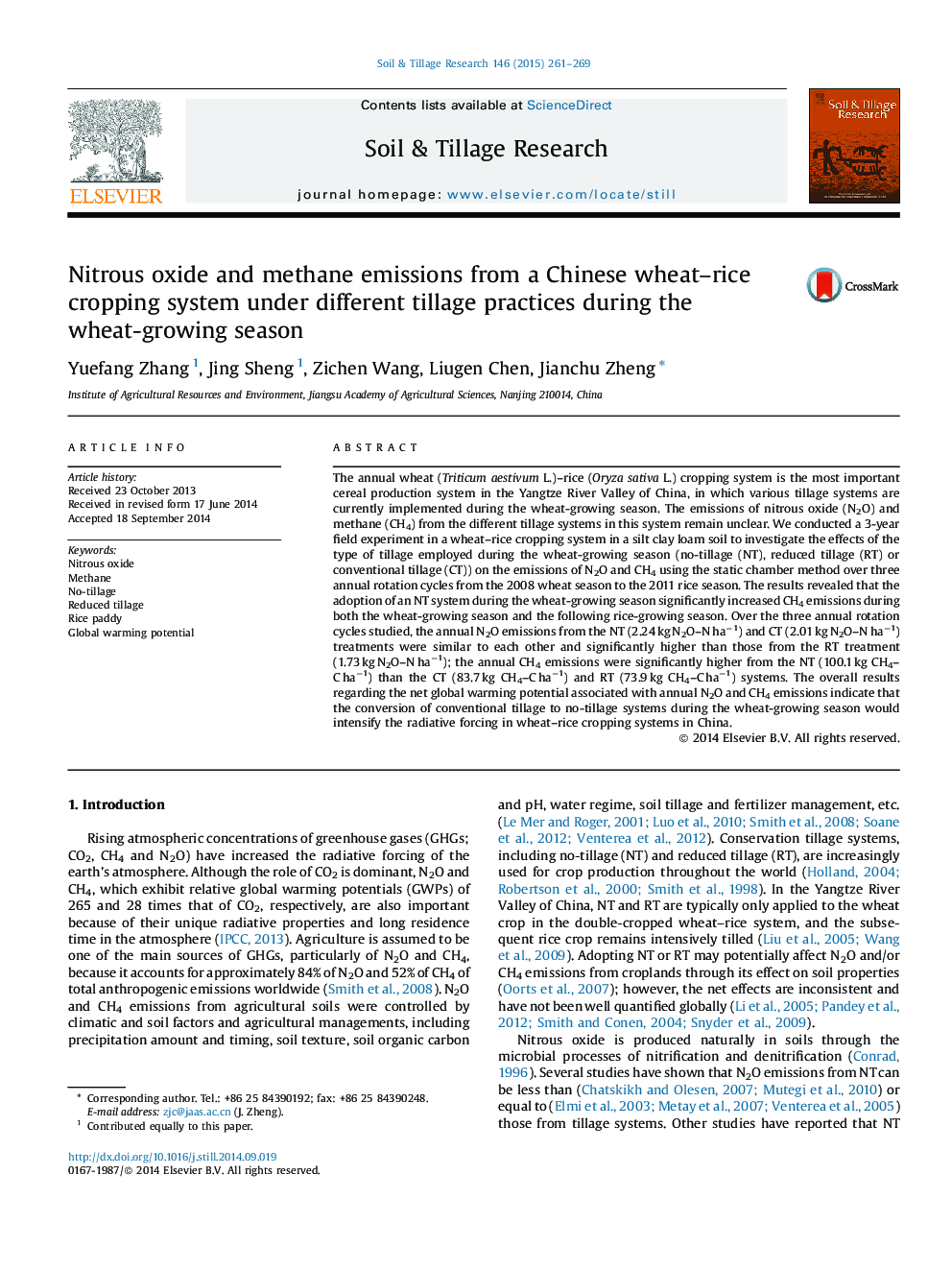| کد مقاله | کد نشریه | سال انتشار | مقاله انگلیسی | نسخه تمام متن |
|---|---|---|---|---|
| 305722 | 513045 | 2015 | 9 صفحه PDF | دانلود رایگان |
• Adoption of no-tillage during the wheat-growing season increased CH4 emissions during both the wheat-growing season and the following rice-growing season.
• Reduced tillage during the wheat-growing season decreased annual N2O emissions.
• No-tillage during the wheat-growing season increased annual CH4 emissions.
The annual wheat (Triticum aestivum L.)–rice (Oryza sativa L.) cropping system is the most important cereal production system in the Yangtze River Valley of China, in which various tillage systems are currently implemented during the wheat-growing season. The emissions of nitrous oxide (N2O) and methane (CH4) from the different tillage systems in this system remain unclear. We conducted a 3-year field experiment in a wheat–rice cropping system in a silt clay loam soil to investigate the effects of the type of tillage employed during the wheat-growing season (no-tillage (NT), reduced tillage (RT) or conventional tillage (CT)) on the emissions of N2O and CH4 using the static chamber method over three annual rotation cycles from the 2008 wheat season to the 2011 rice season. The results revealed that the adoption of an NT system during the wheat-growing season significantly increased CH4 emissions during both the wheat-growing season and the following rice-growing season. Over the three annual rotation cycles studied, the annual N2O emissions from the NT (2.24 kg N2O–N ha−1) and CT (2.01 kg N2O–N ha−1) treatments were similar to each other and significantly higher than those from the RT treatment (1.73 kg N2O–N ha−1); the annual CH4 emissions were significantly higher from the NT (100.1 kg CH4–C ha−1) than the CT (83.7 kg CH4–C ha−1) and RT (73.9 kg CH4–C ha−1) systems. The overall results regarding the net global warming potential associated with annual N2O and CH4 emissions indicate that the conversion of conventional tillage to no-tillage systems during the wheat-growing season would intensify the radiative forcing in wheat–rice cropping systems in China.
Journal: Soil and Tillage Research - Volume 146, Part B, March 2015, Pages 261–269
